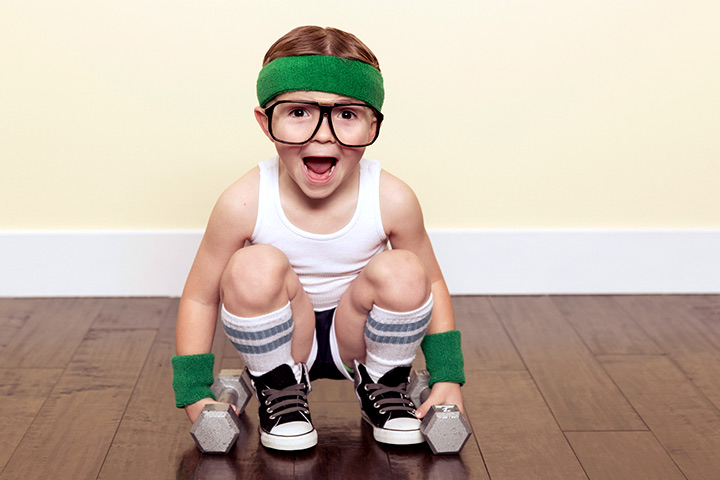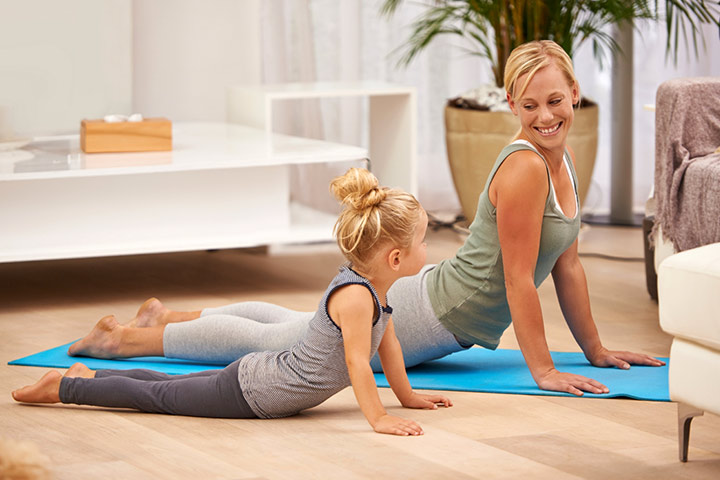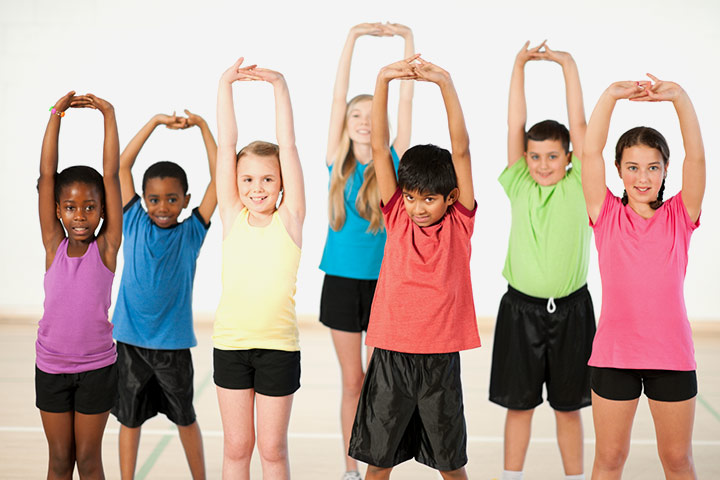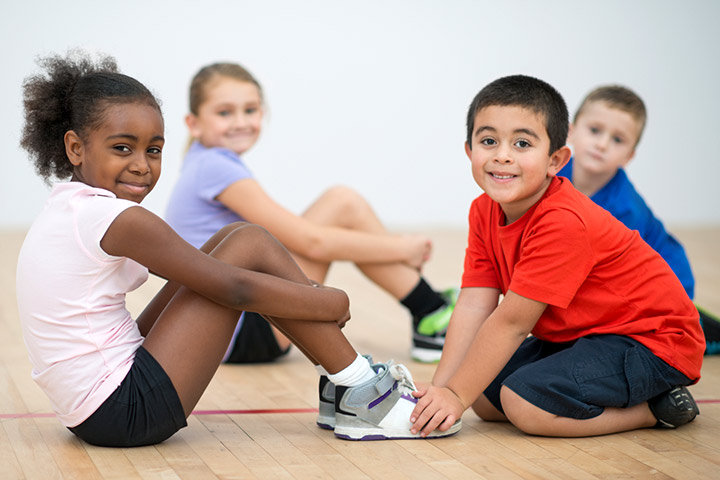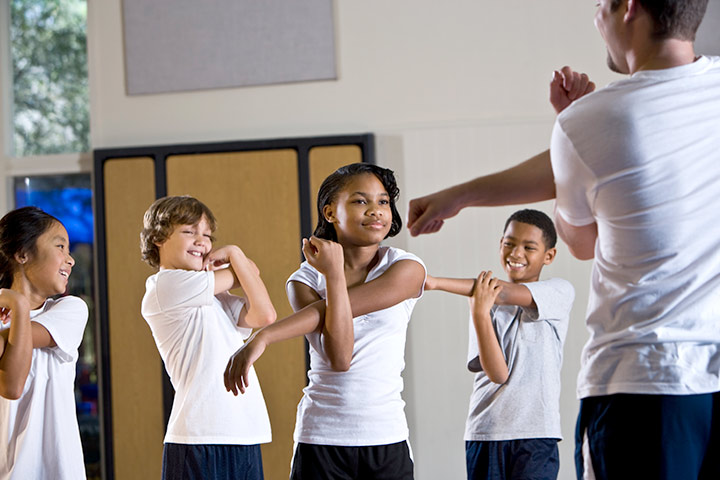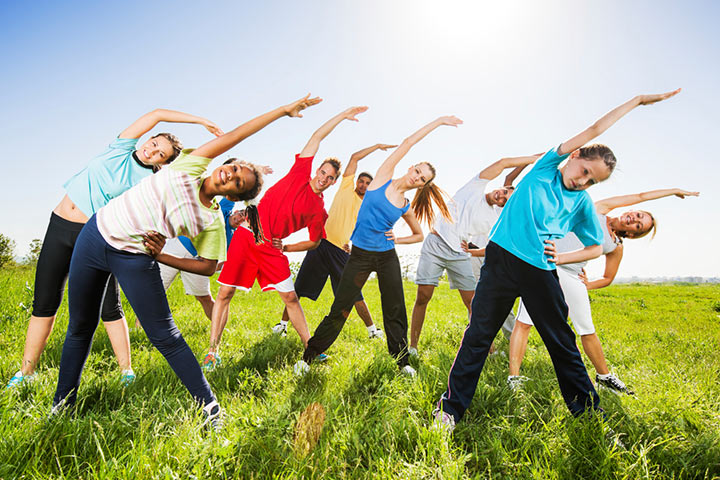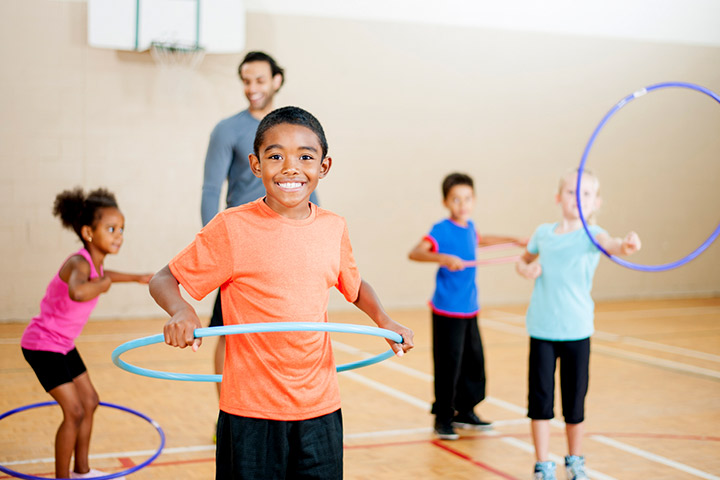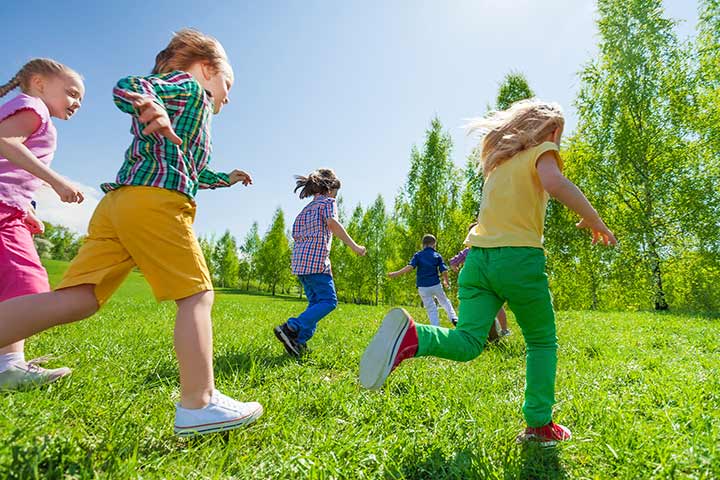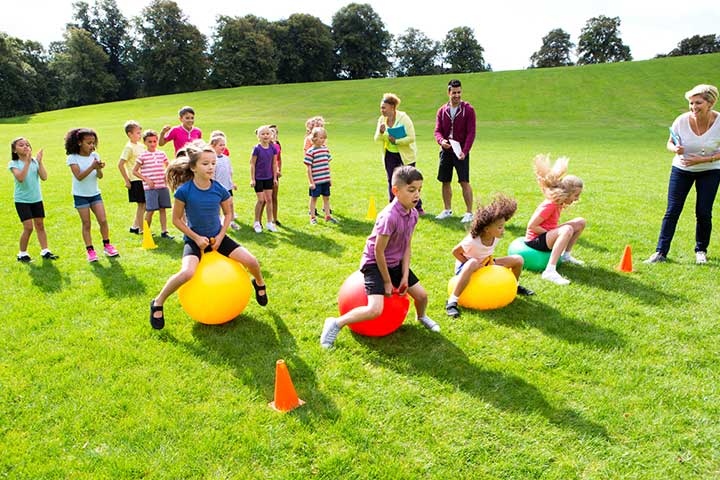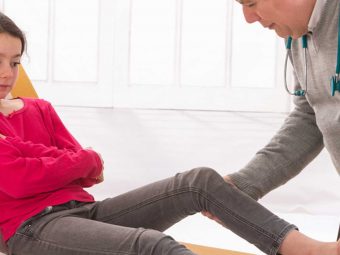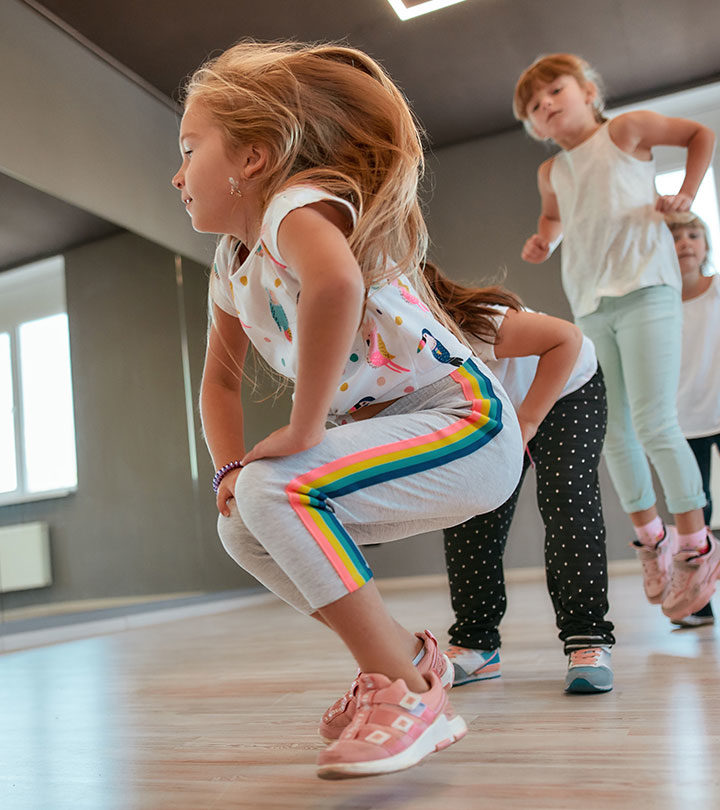
Image: ShutterStock
Warming up is a prerequisite before any strenuous physical activity such as games or exercise. Warm-up exercises for kids help prepare the muscle before the activity and prevent injuries due to muscle sprain. Children should be encouraged to warm up for optimal performance in sports. However, it is important to identify the best warm-up exercises suitable for children depending on the type of activity that follows. Keep reading as we share a list of exercises that can help prepare your active child before hitting the field.
Why Warm Up Exercises For Kids?
Warm-up exercises help prepare the muscles of the body by increasing blood flow to increase the body’s agility and flexibility. The dynamic movement of the warm-up exercises reminds the body of all the actions that it needs to perform during the sport and thus, promotes overall health and wellness. Children also prepare themselves mentally so that their physical actions and minds are connected well.
Child specialist Dr. Mubina Agboatwala opines, “Strenuous exercise requires increased pumping by the heart and increased blood flow. Initially, preparing the body by gradually increasing the blood flow can help the cardiovascular system better cope with requirements. The same applies to the muscular system; thus, warm-up prevents sore muscles. Kids can do several warm-up exercises at home and outside, including jumping jacks, heel raises, leg swings, and rolling of shoulders.”
The ideal warm-up depends on the age of the participants, the sport and the level of competition. It must incorporate all the muscle groups. 5 to 10 minutes of warm up is more than enough, but during the winters, the warm-up times need to increase to compensate for the colder weather.
Benefits Of Warm Up Exercises
- Warm-up exercises help the muscles handle the intense movements required in the games.
- Warm-up exercises increase the respiration and heart rate gradually to avoid the sudden shock during the intense activity.
- Warm-up exercises prepare the cardiovascular system for the continued activity so that players keep up during the practice or game.
- The incremental increase in the body temperature improves the elasticity of the muscle, thereby minimizing the risk of strains and pulls. So, your child won’t complain of sore muscles once he comes back from a game of football. It will also decrease the risk of injury.
- The exercises facilitate the activity of the enzymes and hormonal balance. These exercises also help kids acquire more stamina, energy, and control over the muscles.
- So help prevent your child’s injuries and enhance his physical performances and endurance levels with these easy to do warm up exercises and games.
 Point to consider
Point to considerWarm-Up Exercises
Exercise 1:
- Starting on all the fours, tell your child to raise his hips up in the air to form an upside down ‘V.’ Ensure that his elbows and knees are straight.
- Now tell your child to lift one foot off the ground and place it on the opposite ankle.
- Gently, ask him to lower the heel of the foot close to the ground.
- Now tell him to lift the heel, try to rise back up onto the foot and then repeat.
Exercise 2:
- Have your child lie on the ground with feet flat on the floor and knees bent. The feet should roughly be shoulder-width apart.
- Now tell your child to place his fingertips on the sides or back of the head with elbows pointing outwards.
- Tell him to take a deep breath, contract the abdomen and raise the head and chest until the shoulder blades are 2 inches off the floor.
- At the same time, tell your child to pull the belly button towards his spine and try flattening his lower back against the floor. He has to squeeze the abdominal muscles tightly while performing this move.
- Now tell your child to inhale. While inhaling, he has to lower his shoulders until he is just above the ground.
Tip – Tell your child to keep his neck extended and raise his chin to prevent straining the neck. He can even relax his head by using his hands to support his head’s weight.
Exercise 3:
- Tell your child to start on all fours with the neck and spine in a neutral position. His back should be flat like a tabletop and eyes should look down to the ground.
- Now ask him to inhale while dropping the belly down and lifting the neck and head up slowly. Now on an exhalation, tell your child to lift his spine and belly, with eyes looking towards the belly button.
- Instruct your child to alternate between the first two methods for five to ten breaths.
Exercise 4:
- This exercise will work your child’s shoulder and arm muscles. Tell your child to stand with his arms outstretched and thumbs are pointing down. Tell him to push the arms back, like he is squeezing a ball between his shoulder blades.
- Alternatively, your child can rotate the arms so that his thumbs point up. Tell him to hold and then turn back to the first position. Then hold again and then squeeze the arms back. Ask him to repeat the method a few times, but make sure that he moves slowly.
Exercise 5:
- Have your child kneel and sit at his feet. Tell him to extend his arms and spread the fingers on both the hands.
- Now ask him to inhale deeply through the nose as he opens the eyes wide.
- Next, ask him to open his mouth wide, and stretch out his tongue and roar while exhaling. Repeat this exercise four to six times.
Exercise 6:
- The warm-up exercise will prevent the joints from getting stressed. Tell your child to stand sideways to the direction that he is going to move. Now keeping his hips facing forwards, tell him to cross right over his left by moving sideways down the field.
- Once your child reaches the opposite end of the field, tell him to switch his leading foot and then move sideways back down the field to the starting point.
Exercise 7:
- Tell your child to stand with his legs a few feet apart.
- Now ask him to inhale and bring both palms together.
- Have your child turn on one foot and inhale as he bends the knee of the same leg, keeping the other foot anchored.
- Ask him to look up at the ceiling and then hold the position for 8 to 10 seconds.
- Repeat the exercises 2 to 3 times on each leg.
Exercise 8:
- This warm up exercise will work the muscles in the groin.
- Tell him to start the exercise by kneeling on the mat. He has to keep the back straight, place his left foot on the floor and press it gently forward until the knee bends at a 90-degree angle.
- Next, ask your child to put his elbows or hands on his left knee and then hold it for 10 to 30 seconds, but without bouncing. Switch the legs and repeat the exercise.
Exercise 9:
- This is another fun warm up exercise for kids which will work your child’s muscle on the back of his upper arm. Tell your child to raise his arm straight up overhead with palms facing outwards.
- Now tell your child to bend his elbow so that his fingers reach the middle of his upper back.
- Ask him to try and grab his right hand below with the left hand and then pull it back until he feels the stretch in his right triceps.
- Ask him to hold his stretch for 10 to 30 seconds.
- Now ask him to switch the arms and repeat.
Exercise 10:
- Here’s one of the simplest, yet most effective warm-up exercises for the shoulders, arms, and upper body. Ask your child to stand up straight with his feet together.
- Now with the backs straight, ask the child to reach the arms straight up and overhead, but without locking the elbows. Children can even try touching the palms while performing this exercise.
- Your child can also do a gentle back bend. If he wants to turn backward, instruct him to keep the neck and chin lifted. This is one of the best warm up exercises for children.
 Quick tip
Quick tipFun Warm Up Games For Kids
1. Knee Slaps:
You Will Need:
- Nothing
How To:
- The objective of this playful exercise is to try and slap the knees of each other. The players have to defend their knees by defending the attacks by using their hands.
- Divide the participants into pairs and ask each pair to bend down, facing each other. Let the slap game begin.
- After a successful strike, the players will break contact and will prepare to start again.
- The round will end when someone scores three strikes. The participants have to find new partners and begin the game again.
- Before beginning the game, warn the participants not to wallop anyone and stick to light slaps.
2. Mirroring:
You Will Need:
- Nothing
How To:
- Divide the players into pairs and make them stand opposite each other.
- One player has to make a movement, and the other one has to mirror him as well as he can. If you want, you can allot a time limit and then swap the roles after the time ups.
- When both the teammates have played both the roles, they can try to coordinate the movements of each other so that both the players can become mirrors and players at the same time. It will work best with slow movement, but requires a lot of concentration.
- You can also play this game to help children practice movements for sports like kicks for Karate and passing the ball. Just ensure that you have a big space for these purposes.
3. Donkey Tails:
You Will Need:
- A piece of scrap material
How To:
- Have everyone tuck a piece of scrap paper or material in the back pocket of his or her trousers so that it hangs out like a tail.
- Now you have to set a boundary for the game.
- In this game, the participants will have to try and steal as many tails as possible. But they cannot hold onto their tail, and there must be a sufficient amount of material hanging so that others can also grab it.
- Once a participant gets hold of the tail, he has to tuck it into his trousers.
- The person who has the most tails will win the game.
4. Sticky Parts:
You Will Need:
- Beanbag for each child
How To:
- This warm-up game is best played with a group of 8 children or more. Hand over each child a beanbag.
- When you say go, the children have to skip, run and hop around until the leader (you) calls out the name of a particular body part.
- The children now have to balance the beanbag on that specific body part.
- The last person to complete the task will be out of the game. The winner will be the player who is left after all the rounds.
- The winner will take over the current leader in the next game and give instructions to the rest of the group.
5. Smugglers:
You Will Need:
- Colored hoops
- Beanbags
How To:
- Scatter the hoops on the playing area.
- Now divide the participants into two groups- ‘Goodies “and “Smugglers”. Give the “Goodies” 30 seconds to place the bean bags in their corresponding hoops.
- On the blow of a whistle, the “Smugglers” have to steal the bean bags from their corresponding hoops and place them incorrectly.
- The “Goodies” group members have to try and find a solution to the problem within one to two minutes.
6. Dog And Bone:
You Will Need:
- Beanbag or ball
How To:
- Divide the players into two groups, with one group on each side of the playing area along the line. Place a ball or a beanbag in the center of the game area.
- Each team has to be numbered 1 to 12, which you can change depending on the group size.
- When you call out a number, two people with the same number have to try and get the bone before the other.
- The player that gets the bone has to tag the opponent before the other one.
- The point will depend on how many times the teams get the bone. The team with the highest points will be the winner.
7. Alligator In The Swamp:
You Will Need:
- Multiple ground markings
How To:
- Divide the children into two groups A and B and mark the ground for both the groups. Group A will be the alligators and Group B will be the runners.
- As you say go, the Runners have to run across to the opposite end of the marked area so that they can keep away from the Alligators.
- The Alligators can also leave their circle to chase the runners, and if they tag the Alligator, the Runners have to sit until the next match.
- Repeat the game from the other side of the playing area. When there are just three to five people left, start the game again.
8. Bumper Cars:
You Will Need:
- 1 colored hoop per person
How To:
- The aim of bumper cars is to develop the locomotion skills or awareness. Before starting the game, you have to explain what personal space is and how they can use it.
- Give each child a hula-hoop and tell him to hold at the waist level. Tell them that it is their personal ‘space car’ and they cannot touch any other student’s car. You can give them word directions like ‘stand up’, ‘stop and go’ and ‘sit down’.
- Instruct the children to run from one end of the room or gym to another. Give them directions while they move freely around the room.
Variation:
- If you want, you can also make it an elimination game. For instance, the last one to sit down or stop has to sit out until there is only one player left.
- If you want, you can also tell the children to try jumping, spinning or skipping with the hula-hoop.
9. Respect:
You Will Need:
- Nothing
How To:
- Start the game by having the kids space out.
- Now name any random object that you find in the room, for example, something red, a hat or anything you like.
- The children have to run to the object, get down on their knees and bend to touch the object with their forehead.
- Keep changing the object continuously and give the kids different options so that not everyone is in the corner.
10. Ball Tag:
You Will Need:
- 2 to 5 colored bibs
- Balls
How To:
- Nominate 1 to 3 children to become the taggers, and give each of them a bib for identification. Give each tagger 1 to 2 minutes to play the game.
- The rest of the children have to dodge and evade the taggers. Otherwise, they will be out of the game.
- Taggers will now move around with the ball while passing to each other. The taggers can tag only when they have the ball with themselves, and the ball must touch the target. You even need to explain that the ball cannot be kicked or thrown during the game.
Note:
Use balls according to the sports session.
11. Bump Tag:
You Will Need:
- Nothing
How To:
- Select a cat and mouse from the group. The aim of the cat is to catch the mouse. If the cat manages to grab the mouse, then the mouse will become the cat and do the rest of the chasing.
- So divide the players into the pairs and tell them to stand side-by-side.
- The mouse will change throughout the game by linking to the side of the pair.
- The player to the opposite side where the mouse has linked himself will become the mouse, and the cat has to chase them instead.
12. Traffic Lights:
You Will Need:
- Nothing
How To:
- Here’s another easy and fun warm up game for kids. When you say ‘red,’ the children have to stand still when you say ‘amber,’ they have to walk around and when you say ‘blue’ they have to run.
- The player who fails to follow the instructions will be out of the game and act as a judge for the remainder of the game.
- You can even make the game confusing for children by shouting ‘slow motion,’ ‘speed camera,’ ‘sit and spin,’ ‘roundabout’ and more.
13. Penguin Race:
You Will Need:
- Nothing
How To:
- The game is best played with more than ten children.
- Start the game by asking the participants to slap their hands against their thighs and running on the assigned spot by mimicking the penguin’s style of running.
- Tell the children to start moving slowly so that they become accustomed to it. They can increase the speed at the later stage.
- You can introduce commands such as right bends, left bends and double bends. Include the speeding sound effects and actions while running on the spot.
- Here are some other actions that you can include:
- Penguin walking on the ice
- Penguin dancing at the disco
- Penguin walking through a tunnel
14. Giant Dwarfs And Wizards:
You Will Need:
- Nothing
How To:
- This is a giant game of rock, paper and scissors.
- Divide the children into two teams. Define a playing area and mark two-end safety zones along with a middle line.
- The team will decide the character and then approach the middle line.
- On the count of three, the teams have to perform an action and make sounds that signify their characters.
- The winning team will pursue the losing side and then try to tag them before they make it to the safety zone.
- The tagged player will join the opposite team.
- The game will continue until one team gets all the players. This game also helps kids learn the spirit of teamwork and coordination.
15. Fishy Fishy Sharky Sharky:
You Will Need:
- Nothing
How To:
- Select a shark from the group. The rest of the players have to line up at the other end of the playing area. The shark will decide whom to call forward. For instance, he can call out anyone wearing red or anyone wearing a cap.
- The chosen players have to run to the opposite end of the playing area and past the shark, who will attempt to catch them.
- If the shark catches the players, they will become seaweed. When the players turn seaweed, they cannot move their feet, but can use their arms to catch the others in the group.
- The last player left will become the shark in the next round.
.
Variation:
- Select a few people to be the shark. The rest of the players will be the fish. The Sharks will stand in the middle, and the fish will stand on one side of the playing area.
- The fishes now have to run to the other side of the game area, but without getting caught by the sharks.
- If the fish is caught, he will become the shark and will try catching the fish.
 Quick tip
Quick tipFrequently Asked Questions
1. Are there any risks associated with warm-up exercises for children?
There are no reported risks with warm-up exercises for children.
2. What types of warm-up exercises can be done in a limited space?
Stretching warm-up exercises, such as neck circles, calf stretch, trunk rotation, and hamstring stretch, may be done in a limited space.
3. How often should children do warm-up exercises?
Children aged six and above should get an hour of physical activity daily to promote bodily strength (3). However, they should practice warm-up exercises before any strenuous physical activity.
4. What are some common mistakes to avoid when doing warm-up exercises with children?
Warm-up exercises are essential for both adults and children. They aid in the preparation of our muscles for rigorous activity and the prevention of sprains and injuries. These warm-up activities for kids are enjoyable to do. It will help your children in getting the most out of their workout. Before moving on to a faster and more intensive warm-up, make sure children begin with slow and easy movement. Participate in these exercises along with your child, or pep it up with some music to make it fun for your little ones.
Infographic: Advantages Of Performing Warm-up Exercises For Children
Warm-up exercises prepare children to engage in strenuous activities. They are crucial for them to perform well in any sport. So they must not be overlooked. In the infographic below, we covered the key benefits of warm exercises.

Illustration: Momjunction Design Team
Key Pointers
- Warm-up exercises are necessary to prepare muscles and prevent injuries in children before any strenuous physical activity.
- The ideal warm-up exercise should consider age, type of activity, and level of competition, and engage all muscle groups.
- Warm-up exercises offer several benefits, including improving muscle elasticity, preparing the cardiovascular system, and aiding hormonal balance and enzyme activity.
- Kids can enjoy warm-up exercises with slow and easy movements before moving on to more intensive exercises.
- These exercises can be made fun with music or parent participation.
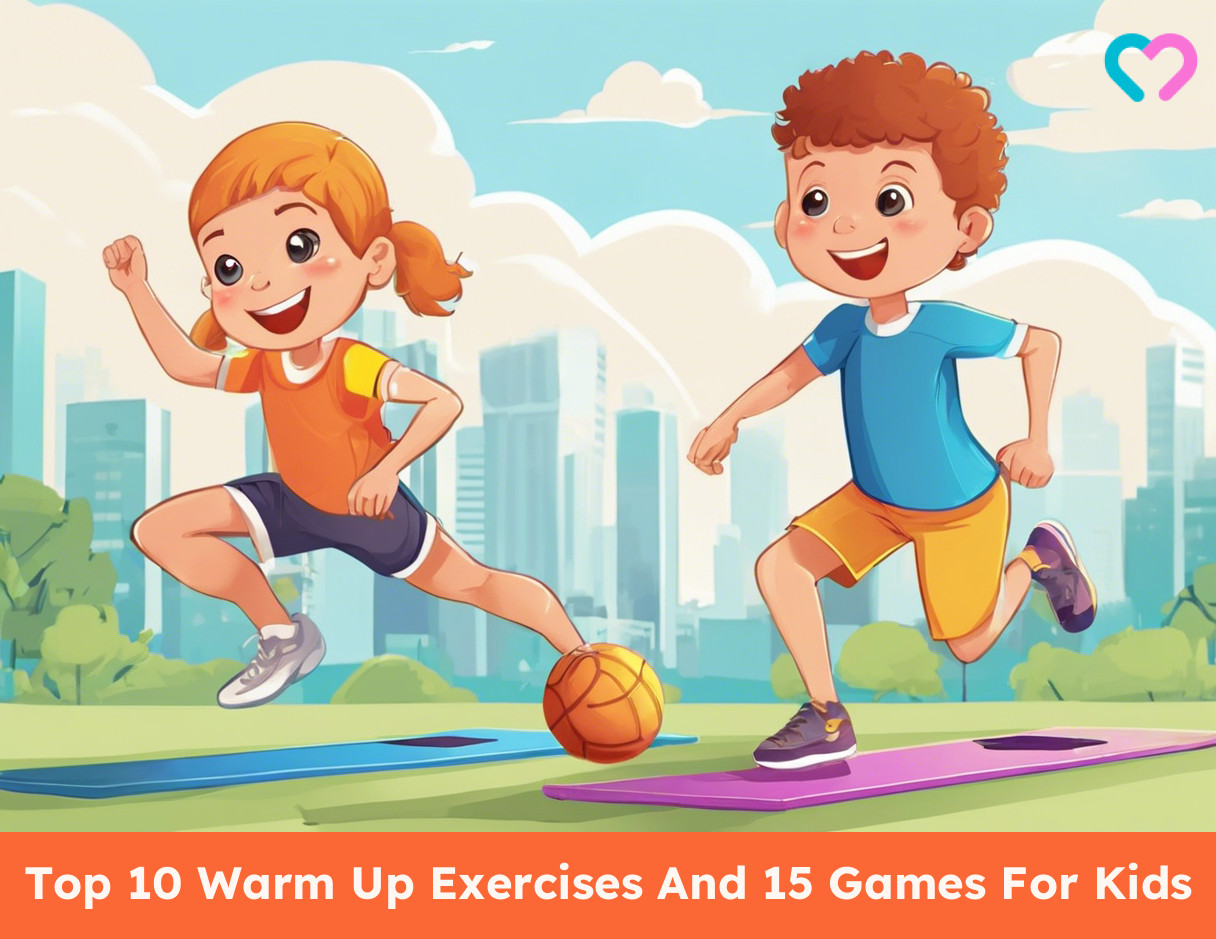
Image: Stable Diffusion/MomJunction Design Team
Getting the body moving can keep you energized for the day ahead. Start your day off right with these fun and easy warm-up exercises for kids!
References
- Why Warming Up and Cooling Down is Important.
https://www.tricitymed.org/2016/12/warming-cooling-important/# - 23 Warm-Up Activities for Kids.
https://marathonkids.org/warm-up-activities/ - How much physical activity do children need?
https://www.cdc.gov/physicalactivity/basics/children/index.htm - The Common Mistakes People Make When Warming Up.
https://www.acefitness.org/resources/everyone/blog/5779/the-common-mistakes-people-make-when-warming-up/ - Warm-Up Mistakes That Can Ruin Your Workout and Leave You Injured.
https://rauschpt.net/5-warm-up-mistakes-that-can-ruin-your-workout-and-leave-you-injured/






